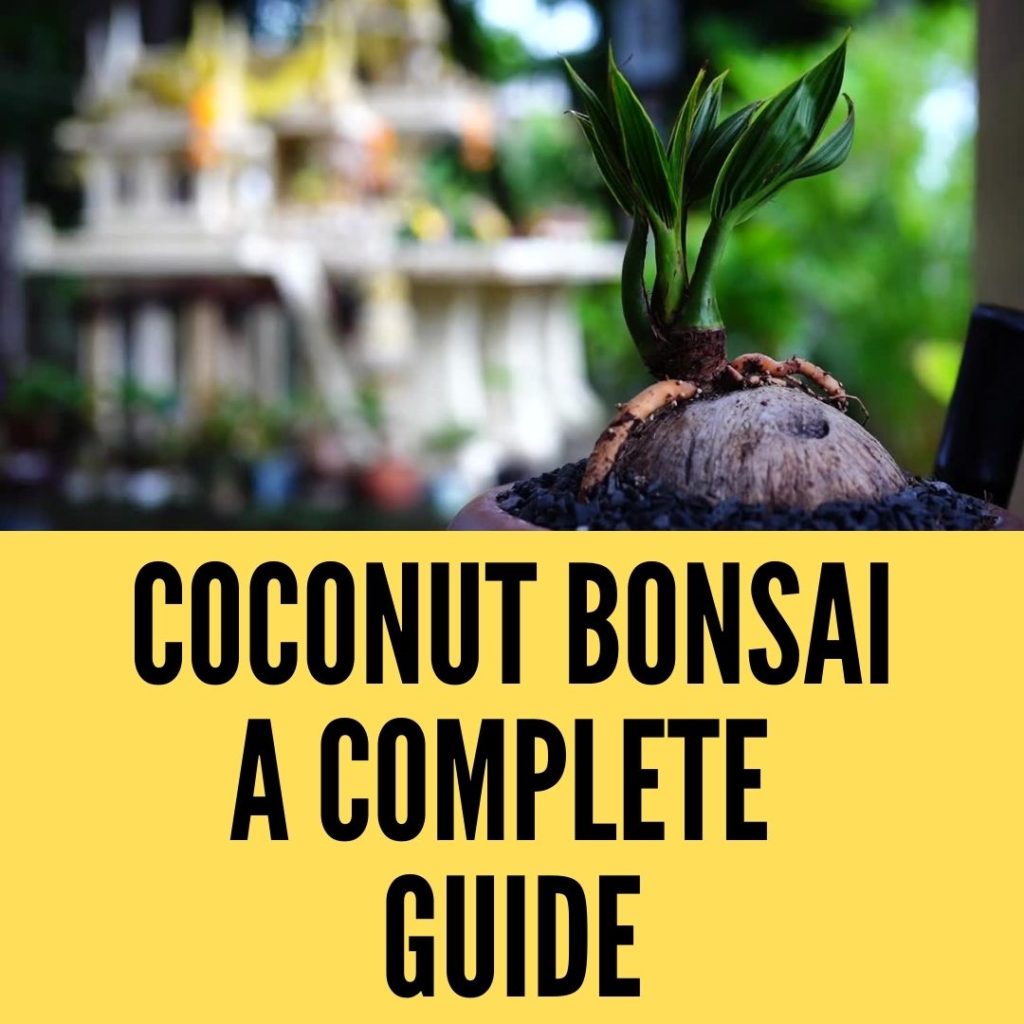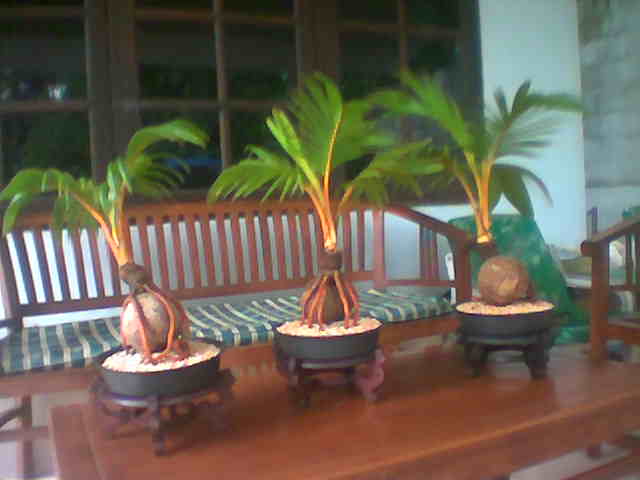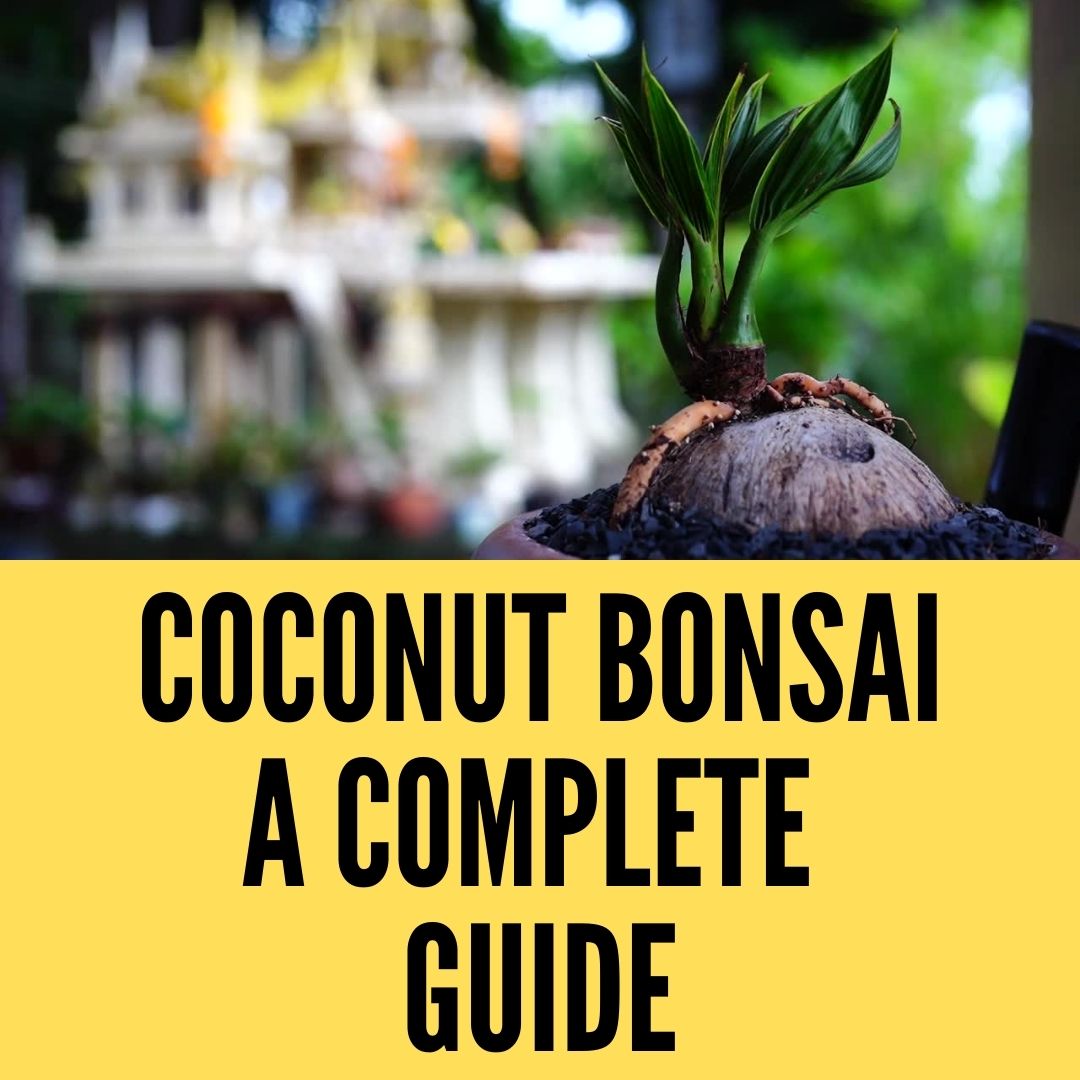For those who are obsessed with growing plants and are practicing as a hobby, let me tell you growing bonsai plants is one of your best choices. If you are tired of growing ornamental plants and desire to try something different, then keep on reading until the end.
Today we will tell you everything about how to grow a coconut bonsai, what ingredients you will need, specifications, and some FAQs as well.
Bonsai
Bonsai is the art of growing plants in its miniature version having similarities with dwarf plants in small pots or containers. It originated from China 1000 years ago and in Japan, the word means ‘tray planted’, which prefers plants that are usually nurtured in a pot giving it a mature appearance.
The cultivation process is sometimes misunderstood with that of dwarf culture. But they are different as dwarfing needs genetic engineering, research, and discovery, where areas bonsai are simply planted and nurtured in a special process that we are going to discuss here.
Coconut bonsai
Cocos nucifera, simply known as coconut tree is something we all know and we use almost every part of it. The tree is a prominent part of the Aceraceae (palm family), originating from mainly Southeast Asia. The average height of a coconut tree is usually 30 meters containing 4-meter-long leaves. Considering the height of a normal coconut tree, the plantation of coconut bonsai is comparatively harder.
Coco bonsai is grown through the root restriction of a normal coconut tree. As the tree does not have branches and lacks a cambium layer, the trimming of the root has been made the easiest process for growing it.
Ingredients
- Coconut seed
- Sandpaper
- Two pot or container
- Planting media: A mixture of soil, sand, manure, cocopeat, rice husk
- Carpet of plastic gutter
- Knife
- Glue or stapler
- Pen cutter
- Brush and wooden Barnish (optional)
- Moss or sand for beautification.
How to grow a coconut bonsai

1. Preparing coconut seed:
The first step of building a bonsai tree is choosing a perfect and healthy coconut for the plantation process. Make sure you choose a mature and mostly round coconut as oval-shaped coconut doesn’t look good after growing. Put the coconut in a plastic bag or container fill it up with sand and make sure the shoot is in the upward direction.
Wait for some days until the shoot grows to a minimum of 25 centimeters so that you can detach it from the bag. The product you will get is a mature coconut seed ready for plantation. The outer portion will look fibrous and, on the inside, you will find a hard shell.
2. Smoothening the seed:
The next step is to peel off the fibers from the mature seed you made. Make sure you use a clean hand and while peeling, try to not damage any roots as they are very necessary for the plantation process. Clean off the remaining fibers so that there are no husks left.
Now you will be needing sandpaper for making the seed smooth. Use the sandpaper with both of your hands for rubbing the outside of the shell until the outer membrane is leveled and polished. Next, dip that piece of shell into the water, clean it and go for preparing the planting media.
3. Preparing the planting media:
The planting medium is to be prepared using soil, sand, and manure by the ratio 1:2:1. Mix all of the ingredients in the proper ratio. You can use other ingredients like cocopeat, rice husk, etc. in a small amount. Your planting media is ready. Now prepare a pot for inaugurating the planting process.
4. Plantation:
Now for the most important part, fill up the 3/4th part of the prepared pot with planting media and water it with a hose. Next, grab a carpet of plastic gutters and a knife. Cut it in a rectangular shape with measurements considering the size of the shell you chose, making sure the shell can be surrounded by it.
Now give the rectangular piece a cylindrical shape for the shell to fit in, staple, or glue the ends for proper plantation. The next thing to do is make a small hole in the carpet for the stem of the shell to be put through that hole. After that put the coconut shell inside the cylindrical rug with the stem facing upward revealing itself through the hole. Add more soil inside the rug and water it. Lastly, keep it in shade for 1 week.
5. Shoot slicing:
After a week, the shoots must have grown long. Now grab a penknife and slice small portions of the end part of the shoot skin that is visible through the hole. Make sure you slice many small portions and do not cut the whole section. After 2 weeks, slice the portions in the same way and clean off the extra fibers. The shoot must have grown small leaves by now. Make cuts like this almost regularly and wait for 3-5 months to see the major portion of the plant grown.
6. Moving the plant to a nice pot:
After the age of 5 months or less, the whole plant will be grown into a good size. Open the rectangular rug and detach the coconut shell from the soil. Cut the extra white roots surrounding the shell and clean it with water. Now prepare a nice pot and fill it up with the planting media like the previous process. Put the shell with its root and cover it with more soil. Make sure you level up the soil so that it looks good. Wash the whole plant with clean water making sure there is no dust left in the shell and shoot.
Now take a clean and wet cloth and wrap it up around the shell. Keep it like this for a week.

7. Finishing:
After a week, open the cloth wrapping and clean the coconut shell with a brush removing all the extra roots surrounding the shell. For beautification. Paint the shell with a wooden varnish. You can put more fresh soil in the pot and use moss to cover it. It gives a nice aesthetic look to the whole plant.
Here you go. Your coconut bonsai is ready and will grow into a beautiful plant.
Lastly, let us know some specifications about the tree that you have to maintain throughout the process of nurturing it.
Specifications:
- Weather: The plant must be grown in optimum weather conditions and a tropical area. The temperature needs to be on an average of 30°C in summer and winter temperature should be above freezing point. The plant must be kept under direct sunlight for at least half of a day.
- Use of Fertilizer: Use of fertilizers like FYM, green manure, superphosphate, urea, etc. can be used. Other organic or liquid fertilizers can also be used.
- Regular watering: Watering is something one should do regularly if you want to nurture a healthy plant.
- Coconut selection: This is one of the most crucial steps to take first. The quality of your bonsai will be determined by a healthy coconut tree. Ensure that the coconut you choose is free of disease and insecticides.
- Pest warning: Always keep an eye on the plant to see if it is being eaten by a pest. That will necessitate the usage of pesticides.
- Moving to a new pot on a regular basis: To maintain the plant’s quality, it must be moved to a new pot every few months.
- Pruning: Because coconut trees don’t have branches, pruning is restricted when growing a bonsai.
- Soil selection: Make sure the soil you use is well-drained and has a neutral pH for proper maintenance.
How Long Does It Take To Grow A Bonsai Tree?
Frequently Asked Question
What Is the Life Expectancy of a Coconut Bonsai?
Depending on how well you give attention to it, a coconut bonsai can live for 60 to 80 years. As bonsai, coconut trees have a lengthy lifespan and they sometimes outlive more than 80 years.
However, taking proper care, in this case, is very important. Proper sunlight and adequate water will keep your plant strong for a long.
What Kind of Sun Does a Coconut Bonsai Require?
Each day, coconut bonsai should receive 6-8 hours of bright, direct sunlight. It’s preferable to put your coconut tree in the sun for at least half of the day, or slightly covered if it’s hotter than 85° F, according to Bonsai Empire.
Is bonsai an indoor plant or outdoor?
Normal trees are outdoor plants but Bonsai, as it is a miniature version is a very indoor plant. It will perfectly fit with your cozy home and enhance its beauty. Make sure the plant gets a warm and enlightened environment.
Is it easy to care for Bonsai plants?
It is very easy to grow a Bonsai plant. If the plantation process is made correctly, the rest works are exactly like how you grow a typical plant. With proper sunlight, water, cleanliness it will grow into a beautiful plant.
Conclusion
Bonsai is a plant nourished for beautification. It doesn’t grow fruits or flowers that may come at any use. But the beauty of the plant is what attracts people and some become obsessed with growing a Bonsai.
Here you will get everything that you may need to grow a Bonsai plant. Hope this benefits you. If you want to know more about coconut bonsai, or any other bonsai, feel free to let us know in the comment section below.
